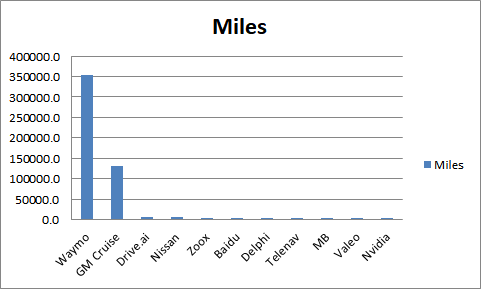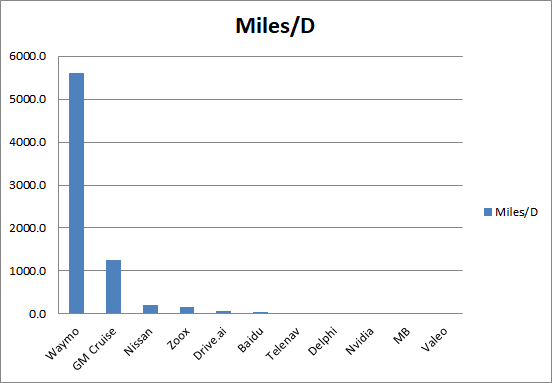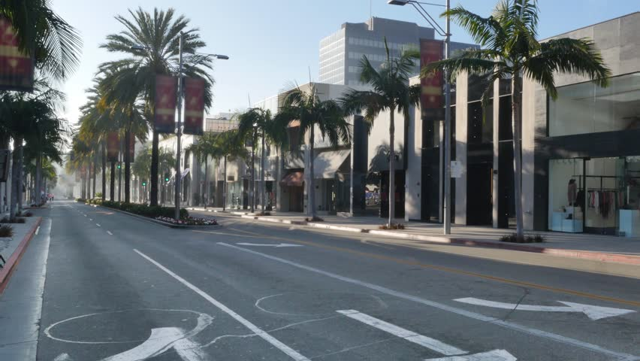[ad_1]
A Tesla self-driving car testing in California
I’ve often (I, II, III) highlighted how Tesla (TSLA) massively lagged other players, namely Google (GOOG) (NASDAQ:GOOGL) and General Motors (NYSE:GM), when it came to autonomous driving development. Bad as things were, though, they have taken a turn to the worse. Now it’s not just about Tesla lagging the pack in autonomous driving. Now it’s about Tesla seemingly having dropped out of the pack altogether.
We should perhaps have guessed it. When Elon Musk says something is 2-3 years out, it’s quite possible that he’s trying to say “never.” And when something is perennially 2-3 years out, that also can mean you’re not moving toward it.
That’s what seems to be happening with Tesla and autonomous driving. Tesla is somewhere between “never” and “not moving.” Why would I say such heresy? Because according to Tesla’s report to the California DMV, Tesla conducted no public road testing of its autonomous efforts during 2017.
Sure, Tesla put out all kinds of possible excuses:
- Testing elsewhere!
- Simulations!
- Closed test tracks!
- Shadow testing!
These are all likely baloney. The kind of urban self driving that needs to be tested has to happen on actual public roads. It has to because that’s where the complexity is. Moreover, Tesla always seems to have a lawyer behind its public communications. Notice how the excuses are worded (bold emphasis is mine):
Tesla conducts testing to develop autonomous vehicles via simulation, in laboratories, on test tracks, and on public roads in various locations around the world. Additionally, because Tesla is the only participant in the program that has a fleet of hundreds of thousands of customer-owned vehicles that test autonomous technology in “shadow-mode” during their normal operation (these are not autonomous vehicles nor have they been driven in autonomous mode as defined by California law), Tesla is able to use billions of miles of real-world driving data to develop its autonomous technology. In “shadow mode,” features run in the background without actuating vehicle controls in order to provide data on how the features would perform in real world and real time conditions. This data allows Tesla to safely compare self-driving features not only to our existing Autopilot advanced driver assistance system, but also to how drivers actually drive in a wide variety of road conditions and situations.
The highlighted words are not innocent words. Notice how the actual answer to the California DMV requirement is worded (bold emphasis is mine):
For Reporting Year 2017, Tesla did not test any vehicles on public roads in California in autonomous mode, as defined by California law. As such, the Company did not experience any autonomous mode disengagements as part of the Autonomous Vehicle Tester Program in California.
See the difference? Up above in the excuses section Tesla doesn’t say it tests vehicles through simulation, laboratories, test tracks or public roads elsewhere. It says it conducts testing to develop such vehicles. That’s a mighty difference, if someone ever accuses Tesla of saying it was testing vehicles – it didn’t say as much. It said it tests stuff to develop such vehicles, but not the vehicles themselves.
More to the point, we could also say that Google Waymo has its own “urban test track” which tries to replicate and test scenarios. But alas, Tesla doesn’t. Tesla has just a regular circuit-type test track which wouldn’t fit the purpose. Plus obviously Google is far from thinking the test track is good enough to avoid doing the actual testing in the real world.
Tesla also could use simulation (as Google and others do), but again that’s no substitute for real testing. It’s not a full substitute even for “simpler” things like aerodynamics work (when it comes to racing) or engine performance and reliability. Why would it be for a much more complex endeavor? Simulation work needs real-life confirmation and fine tuning. Tesla didn’t have real-life testing, so how would it fine-tune the approach? Shadow testing wouldn’t be it for a simple reason: Literally every second the car is deviating from what “it would have done if autonomous,” invalidating any future scenarios due to something akin to the butterfly effect, or more simply how moving a gun very slightly can put a bullet meters from a target.
The only thing remaining is “testing elsewhere.” That’s not believable, simply because:
- Tesla’s engineering and expertise is concentrated in California.
- If Tesla tested elsewhere it would eventually have been caught testing.
Tesla has no motive to test elsewhere to begin with (to hide some kind of fantastical progress), since its timeline to deployment now exceeds both Waymo’s and GM’s. Lest we not forget that Elon Musk himself said “2-3 years” recently.
So again, that leaves us at the obvious answer: Tesla is not testing actual autonomous vehicle prototypes. Tesla is, at most, in the prior phase … preparing vehicles to eventually be tested, by doing limited testing through simulations, track work, etc. Why would Tesla find itself in this situation? Likely because it’s dedicating its engineering effort to fix AP2 and try to bring up a few more features so as not to get hit with lawsuits left and right because of the snake oil it sold.
Could Tesla catch up some, now that it sees several other of players continue to fly past it? Well, if could go out and buy one of those players. But the problem here is that it would also be competing with giant automakers which have shown themselves willing to buy startups in the space for $1 billion apiece. Tesla can’t as easily pay $1 billion, unless it pays with stock.
How Do Things Look Now?
I’ve long stated that Google Waymo and General Motors led the pack when it came to autonomous driving. This long-held opinion was recently matched by others. Yesterday we got yet another look into how the field is evolving, through the disclosure of the 2017 California DMV disengagement reports. This is how things look now.
Miles Driven

In terms of miles driven in the real world and on public roads and highways, Google Waymo and General Motors continue to lead very substantially. This also is clearly a result of their trust in the systems they already have.
Miles / Disengagement


In terms of miles driven per necessary human intervention, again Google Waymo leads the pack substantially, while being followed by a now-closer GM. A few other comments are necessary here:
- GM’s miles are more difficult, as are Zoox’s. Both relate to miles driven in the difficult San Francisco urban setting. This argues for GM to be closer to Google Waymo than it looks, and also for Zoox to now be the third-most advanced player, in spite of not having all that many real miles under its belt. It wouldn’t be surprising to see Zoox be bought out, even though it has raised more than $250 million already.
- Miles per disengagement continue to improve over time for most leading players. By October plus November, GM Cruise was at more than 6,500 miles per disengagement. Google Waymo was at more than 14,400 miles per disengagement.
- Telenav and Nvidia (NASDAQ:NVDA) miles per disengagement are not all that relevant, as their miles were nearly all and all on highways and on/off ramps. Those are easier use cases which distort the numbers higher (even though they aren’t that high for both).
In light of these results, it’s not surprising that both GM Cruise and Google Waymo are near their first real, potentially commercial, deployments. It’s likely that initially any robo-taxi fleets will see rare instances where the cars get stuck and handled remotely. A necessary human disengagement (thought necessary by the human) doesn’t mean the outcome in the absence of human action would be an accident, either.
Conclusion
The race toward self-driving is still on. The absolute leaders, Google Waymo and GM Cruise, continue to be the same. Zoox has potentially emerged as the third most advanced system. All of the top systems follow more or less the same logic I described in my article titled “Tesla: 2 Self-Driving Cars Walk Into A Bar…”
As for Tesla, Tesla is a no-show. Instead of producing self-driving advancements, it produces carefully worded excuses. Tesla is nowhere near delivering, and the problem it’s trying to solve is more difficult to boot. Already, Elon Musk says that he doesn’t expect to have a car that self drives more safely than a human less than three years out. In Elon Time that approaches “never.” Yet, Tesla continues to happily sell cars with a supposed FSD (Full Self-Driving) feature and capability. Tesla is just creating a liability powder keg right there.
Self-driving is coming. But surely not by Tesla.
Disclosure: I am/we are short TSLA.
I wrote this article myself, and it expresses my own opinions. I am not receiving compensation for it (other than from Seeking Alpha). I have no business relationship with any company whose stock is mentioned in this article.
[ad_2]
Source link













